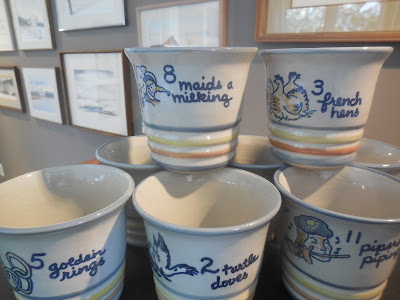The entry deadline for Fantastic Fibers, the annual juried show at the Yeiser Art Center in Paducah KY, comes at the end of this week and if you're on the usual-suspect email lists you may be getting reminder messages. I'm here to tell you why I'm not going to do an entry.
First off, what's good about FF. Although Paducah is way off the beaten path of the art world, and the Yeiser is a small museum, the show runs during the huge AQS exhibit so lots of the 30,000 quilters making the Paducah pilgrimage will see your work. And the awards are decent: $1,000, $500 and $250, and there's going to be a printed catalog. There are no size limits, especially appealing if you love to work big as I do.
In recent years FF has succeeded in attracting excellent work from around the world; I particularly remember a fabulous piece by Eszter Bornemisza, the great fiber artist from Hungary, in the 2012 show. (Read more about it here.)
Eszter Bornemisza, Primitive Findings (detail below) -- in Fantastic Fibers 2012
So why am I not going to enter this year? Money.
The entry fee is $25 per piece! You can enter up to five pieces ($125), but even if you don't have that many wonderful creations lying around, we're talking way too much $$$$ for me. On general principles, I am hostile toward shows that seem to regard the entry process as a revenue opportunity rather than a way to simply cover costs.
Since I never delete old emails I can report that the FF fee was $12 per entry in 2014, $15 per entry in 2015 and 2016 (25% increase), and now is up to $25 (66% increase). That's pretty steep -- both the fee and the rate of increase -- for a small museum in an out-of-the-way town. I think it's overreaching.
So I'm opting out, thank you.























































